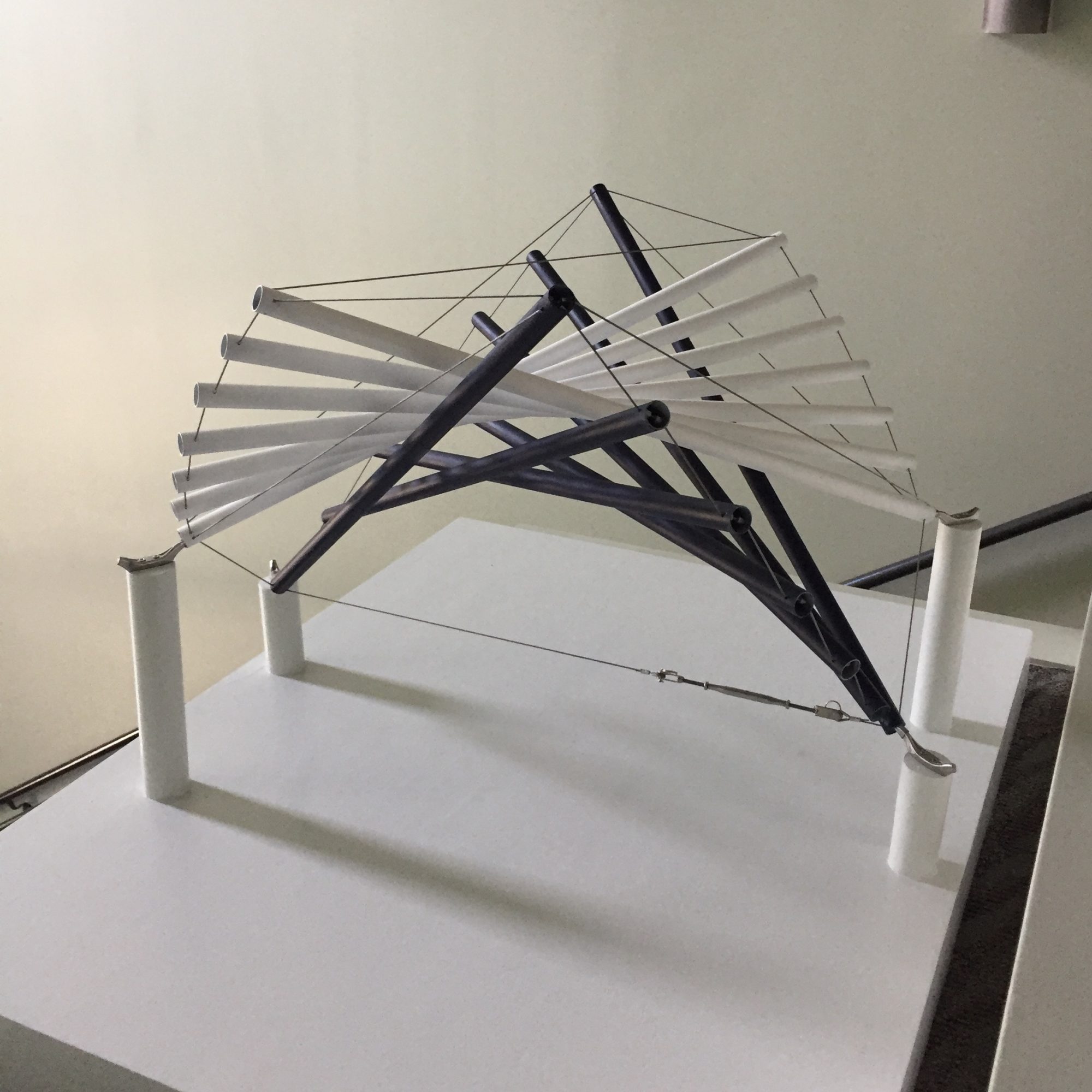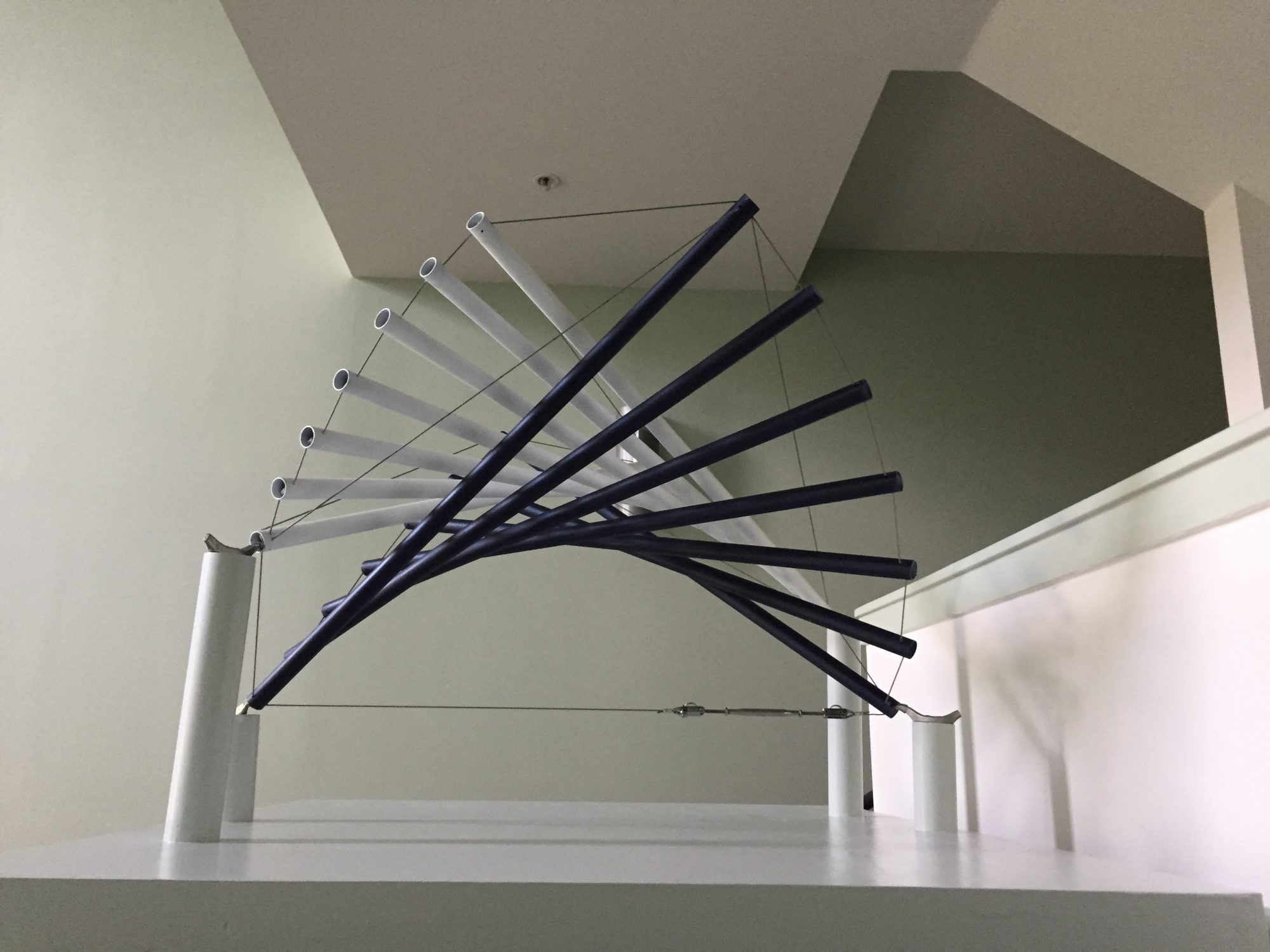
“From straight lines, a pair of complementing curvaceous figures emerge; one pale, one of vibrant color. The figures grapple with each other like hands being clasped, yet not touching.”
This is a Tensegrity[1], a structural form that yields rigidity and integrity solely from the tension in flexible connections: no two rigid members touch, unlike most objects and buildings.
The two colored shapes effected by the rods are known mathematically as Hyperbolic Paraboloids[2] , which render three dimensional curves from straight lines, in this case, a “saddle” shape, a surface curving simultaneously in two opposite directions.
I made this piece to explore the particularly fascinating geometry of a Double Saddle Tensegrity, where each saddle (representing a figure) is given form and integrity by the other. Separating them or cutting any one tendon would cause the entire sculpture to collapse. To exist separately, each would need additional tendons. Thus the figures are co-dependent.
Later, interesting representations emerged for me. The two saddles announced themselves as complementary figures, so I painted them in different colors. The blue figure is foreign, alien. It is struggling underneath the domineering skinnier pale figure yet its outstretched limbs reach higher.



____
Notes
1. The portmanteau Tensegrity was coined by R. Buckminster Fuller from “tension” + “integrity”, meaning the rigid structural integrity possible solely from tension (not compression nor rigid joints). Tensegrity was developed in sculpture by artist Kenneth Snelson (1927-2016). Snelson’s work is widely installed, for example in front of the Stanford University Green Library and in the Hirshhorn Museum courtyard in Washington, DC.
2. Hyperbolic Paraboloids are occasionally seen in modern architecture roofs, such as San Francisco’s St. Mary’s Cathedral and London’s new Design Museum.
Materials: steel tubing, stainless steel cable, wood mount